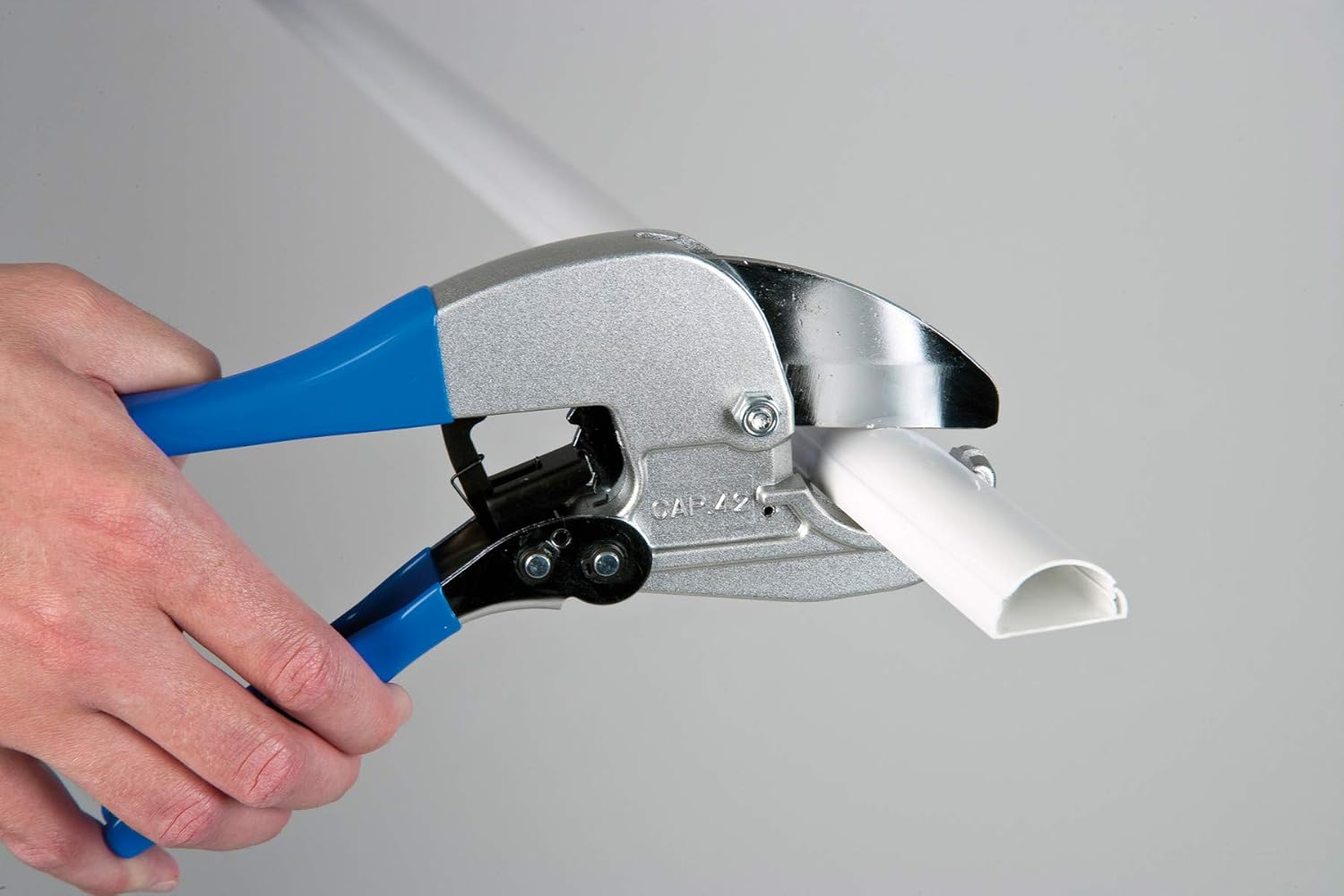
D-Line Cable Trunking Cutting Tool RC30MM - for use with 30 x 15mm Trunking (5 Pc)
FREE Shipping
D-Line Cable Trunking Cutting Tool RC30MM - for use with 30 x 15mm Trunking (5 Pc)
- Brand: Unbranded

Description
Galvanised steel conduit is often preferred for outdoor and underground cable runs, or in any other places where there’s likely to be a degree of exposure to moisture. Stainless steel trunking is sometimes preferred for aesthetics where a cabling run will be in full view. Aluminium conduit is a great choice for many lightweight applications, such as when wiring needs to be run across ceilings. If conductors and cables need to be run across areas where they present a tripping or snagging hazard, floor trunking may offer some degree of protection for the physical wiring itself. However, conduit and trunking are most often used where cables will be elevated or hidden. For cabling running across an open floor surface, it can be more practical to use dedicated cable protectors and cable covers for safety.
You'll need tools like a measuring tape, pencil, saw, screws, screwdriver, cable clips, and safety equipment. Having the right tools ensures a smooth installation process. You can then calculate the size of the cut-out section by dividing the cable tray width (A) 600mm by 4.09 (C).Using a saw, carefully cut the slotted finger trunking sections to the desired lengths based on your measurements. Ensure the cuts are clean and accurate for a professional finish. A: It's recommended to install skirting trunking on smooth and even surfaces for a secure fit. Uneven walls may require additional preparation. Skirting trunking, also known as wall skirting trunking, is a type of cable management solution used to conceal and protect cables along the base of walls. It serves a dual purpose, enhancing both aesthetics and functionality. This type of trunking is prevalent in commercial and residential spaces, offering a neat and organized way to route cables without compromising the interior design. Many workplaces and industrial settings use cable trunking to supply power to multiple machines or devices in different locations. You’ll often see plastic dado trunking running around the wall at waist height in offices. This is a special compartmentalised version of the system, designed for carrying several different types of wires separately along the same path. Slotted finger trunking is primarily designed for indoor use. If you need to install it outdoors, choose a weather-resistant version.
Choosing the right size of Trunking comes down to two main things: the amount of cables you need to store, and the amount of space those cables will take up. If you put too many cables in Trunking, you risk overheating them when the power is switched on, potentially blowing your fuses or causing a fire.Using your measurements, cut the skirting trunking sections to the appropriate lengths. Ensure clean and precise cuts for a professional finish. i am trying to learn how to accurately measure and cut cable tray and trunking to be able to fabricate my own angles. If you haven’t got a cable that’s long enough then you’ll need to join two pieces together. This can be done with a resin jointing kit. However, if you’re asking “how to join armoured cable” then you likely made a mistake with step four. If you need power for your shed, or any other type of outbuilding, then you’ll need for it to be connected to the mains via an SWA cable. This stands for “steel wire armoured” cable and is ideal for the job as it’s waterproof and not prone to rotting. It can also be positioned underground, keeping your children and pets safe. Plastic cable trunking is a popular choice for a relatively simple and cheap conduit option that’s robust enough to withstand everyday hazards like dirt and moisture. It can also be bought in both rigid and flexible lengths, depending on whether you need to prioritise physical protection or routing convenience.
Next, align the trunking section with the holes and insert screws through the holes into the wall or surface. Tighten the screws securely but be careful not to overtighten and damage the trunking. Repeat this process for each trunking section, ensuring they are properly aligned and level. When I started I thought the 182 mm corresponded to CA, but I've had a rethink and I believe CF is the correct amount. As CDEF is a parallelogram DE = CF. The fold angle is AEF which will be half of FCB. Come to think of it, CB isn't right for the horizontal either. Drop a perpendicular down from F to CB, let it cross CB at B' and CB' = 170mm.Once you know this, you can work out how large you’ll need your Trunking to be to allow ample space for the cabling.
The other common calculation you need is when you have to work out the amount of set required to make a parallel off-set eg when you have to set a cable tray or gutter around a pillar or set to an off-set wall.Well BAS, as I already pointed out, by the time you have made and fixed the spacer, you've done most of the work anyway. So for the sake of a couple of minutes to drill out some holes with a hole saw, and then run the nibblers along the slot - job finished as I've done it.
- Fruugo ID: 258392218-563234582
- EAN: 764486781913
-
Sold by: Fruugo
